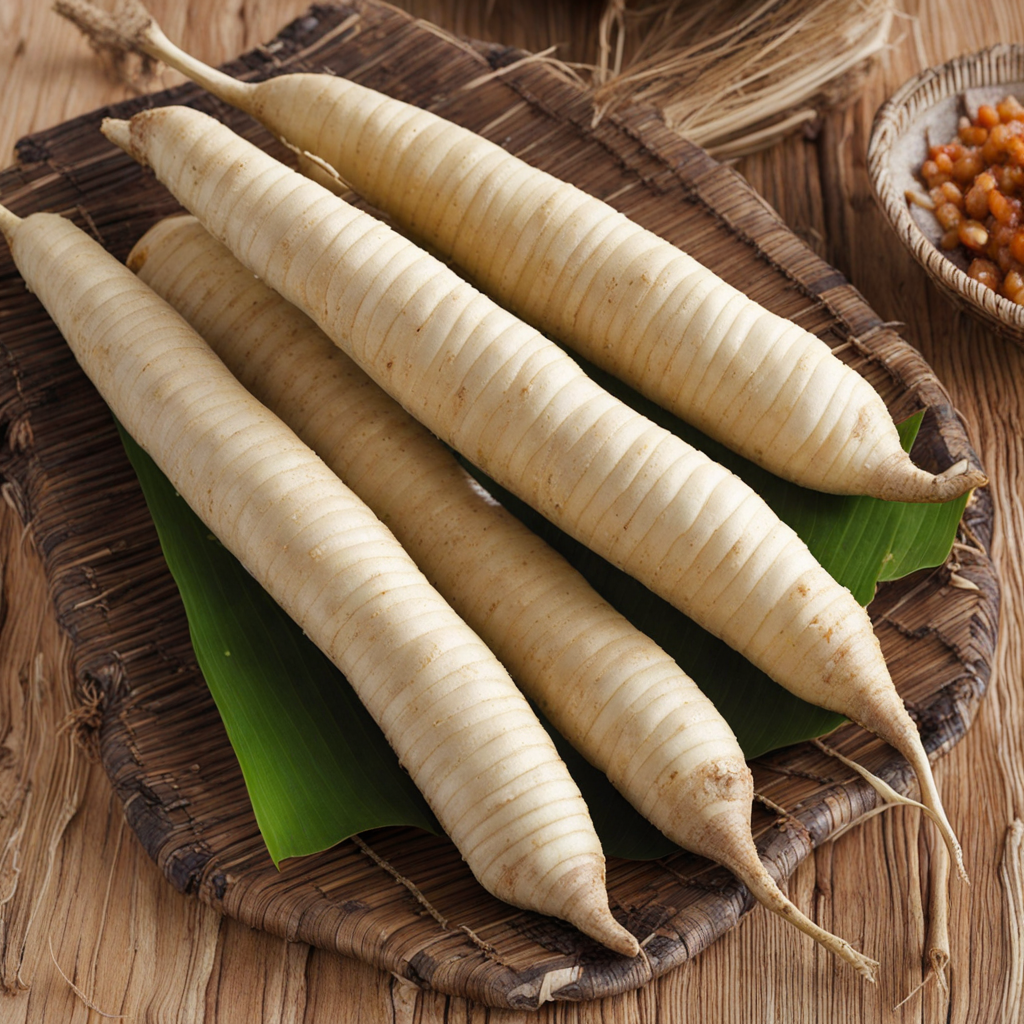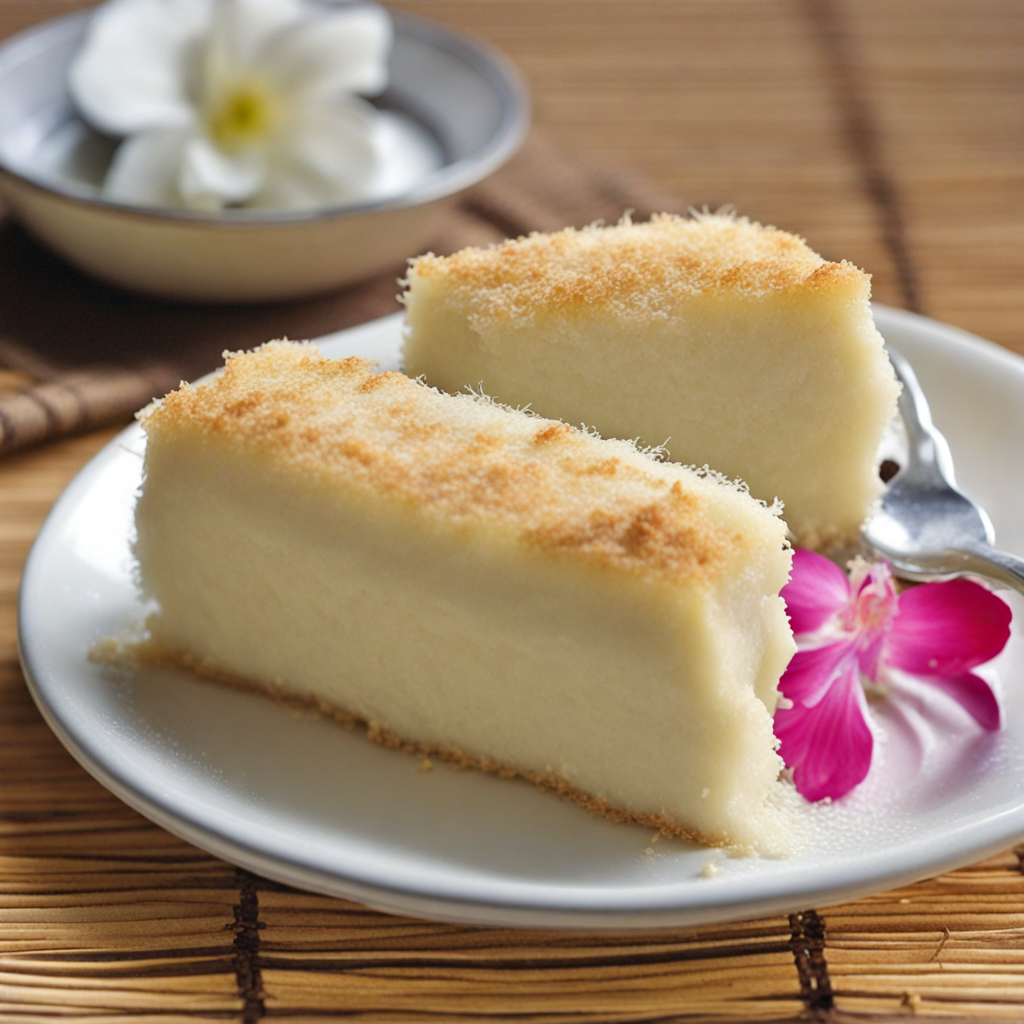Tukir
Tukir is a traditional dish from Timor-Leste that offers a delightful blend of flavors and textures, making it a unique culinary experience. This dish is made primarily from fresh corn, which is ground and then mixed with various local ingredients. The corn is typically cooked until tender and mashed to create a creamy base that is both hearty and satisfying. The addition of coconut milk lends a richness to the dish, while the incorporation of spices such as turmeric and garlic enhances its aromatic profile. The result is a comforting and filling dish that highlights the agricultural bounty of Timor-Leste. Often served with a variety of accompaniments, Tukir can be paired with grilled fish, chicken, or vegetables, allowing for a customizable meal that caters to various tastes. The use of locally sourced herbs and greens, such as moringa leaves, adds a fresh and vibrant note, balancing the dish's creaminess. This adaptability makes Tukir not only a staple in Timorese households but also a sought-after item in local markets and eateries, where it is enjoyed by both locals and visitors alike. As you explore Tukir, you'll discover that it embodies the essence of Timor-Leste's culinary culture, where simplicity meets bold flavors. The experience of enjoying Tukir is not just about the food itself, but also about the communal aspect of sharing a meal with family and friends. Each bite transports you to the lush landscapes of Timor-Leste, filled with the warmth of its people and the richness of its traditions, making Tukir a must-try for anyone seeking to broaden their gastronomic horizons.
How It Became This Dish
The History of Tukir: A Culinary Jewel of Timor-Leste Tukir, a traditional food from Timor-Leste, encapsulates the rich tapestry of the nation’s history, culture, and identity. This dish, often made with cassava or corn, is more than just sustenance; it represents the resilience and ingenuity of the Timorese people throughout centuries of tumultuous change. To understand Tukir is to delve into the origins, cultural significance, and evolution of Timor-Leste itself. #### Origins and Ingredients Tukir’s roots can be traced back to the indigenous peoples of Timor-Leste, who have cultivated the land for thousands of years. The island of Timor, known for its diverse topography and climate, is home to a variety of crops, but cassava (manioc) and corn (maize) have held particular significance. Both are resilient crops that thrive in the rugged terrain, making them staples in the local diet. Historically, Tukir was made primarily from cassava, which was introduced to the region by Portuguese colonists in the 16th century. The Portuguese brought with them various agricultural practices that greatly influenced local food culture. While the indigenous population had their own culinary traditions, the blending of local ingredients with Portuguese techniques marked the beginning of a culinary evolution that would give rise to dishes like Tukir. The preparation of Tukir typically involves boiling or steaming the cassava until it is soft, then mashing it into a dough-like consistency. It is often shaped into small cakes or dumplings, which can be grilled or fried. In some variations, corn is used instead of cassava, showcasing the adaptability of this dish to local tastes and available resources. #### Cultural Significance Tukir is deeply woven into the cultural fabric of Timor-Leste. It is often associated with communal gatherings and celebrations, serving as a symbol of unity and shared heritage. Traditionally, families would come together to prepare Tukir, reinforcing bonds and passing down culinary knowledge through generations. The act of making Tukir is not merely about preparing food; it is a communal experience that fosters connection and strengthens cultural identity. In Timor-Leste, food is a vital aspect of social life. Tukir is commonly served during important ceremonies, such as weddings, religious festivals, and national holidays. The dish’s presence at these events underscores its role as a marker of identity and tradition. Sharing Tukir with guests signifies hospitality and reverence for one’s cultural heritage. Moreover, Tukir holds significance in the context of Timor-Leste's historical struggles. The nation has endured centuries of colonial rule, including Portuguese occupation and Indonesian annexation, followed by a brutal struggle for independence. Throughout these challenges, food has been a source of resistance and resilience. Tukir, with its simple yet nourishing qualities, symbolizes the steadfast nature of the Timorese people, who have maintained their culinary traditions despite external pressures. #### Development Over Time The history of Tukir is closely tied to the broader historical narrative of Timor-Leste. Following the country’s independence in 2002, there has been a resurgence of interest in traditional foods, as Timorese people seek to reclaim their cultural identity. This renewed appreciation for local cuisine has led to a revival of Tukir, with chefs and home cooks experimenting with new ingredients and methods while honoring traditional techniques. In contemporary Timor-Leste, Tukir has become a focal point for culinary tourism, attracting visitors eager to experience authentic local flavors. Restaurants and food stalls across the country now feature Tukir as a signature dish, often accompanied by various sauces or side dishes that highlight the diversity of Timorese cuisine. This modern interpretation allows for creativity and innovation while preserving the essence of the dish. Additionally, the rising global interest in sustainable and locally sourced foods has further elevated Tukir’s status. As a dish made from readily available ingredients that require minimal processing, Tukir aligns with contemporary values of sustainability and simplicity. This connection to local agriculture not only supports farmers but also promotes food sovereignty, allowing communities to take pride in their culinary heritage. #### Conclusion Tukir is more than just a dish; it is a symbol of the resilience, identity, and unity of the Timorese people. Its origins rooted in the island’s agricultural practices reflect the enduring connection between food and culture. Through centuries of colonization, conflict, and independence, Tukir has remained a steadfast element of Timor-Leste’s culinary landscape, evolving while retaining its cultural significance. As the world becomes increasingly interconnected, the story of Tukir serves as a reminder of the importance of preserving local food traditions. It embodies the spirit of Timor-Leste, a nation that has faced adversity yet continues to celebrate its rich heritage through the simple act of sharing food. Today, Tukir not only nourishes the body but also strengthens the bonds of community, making it a cherished culinary jewel of Timor-Leste that will endure for generations to come. In every bite of Tukir, one can taste the history, the struggle, and the triumph of a people who have carved out their place in the world.
You may like
Discover local flavors from Timor-leste







